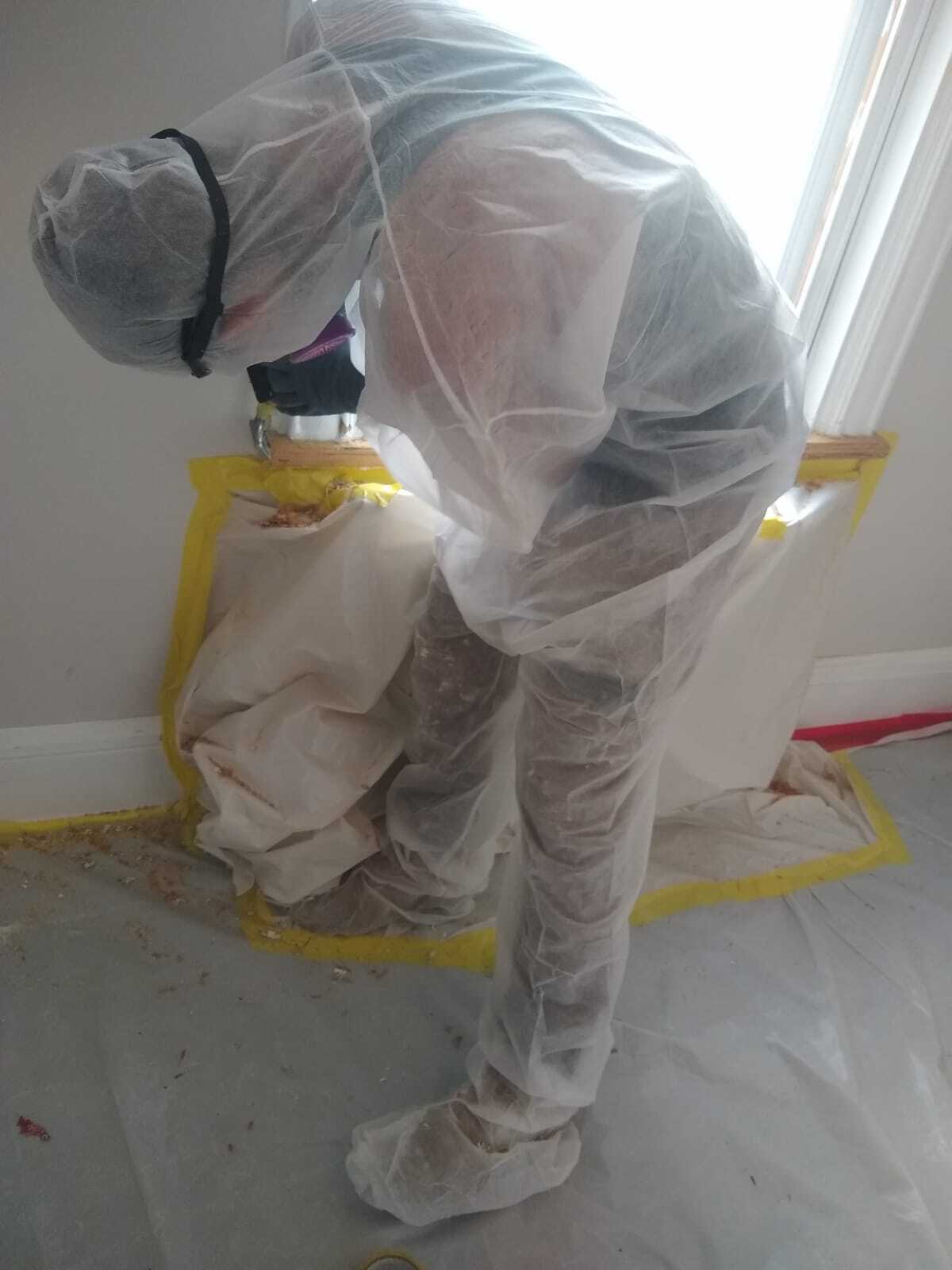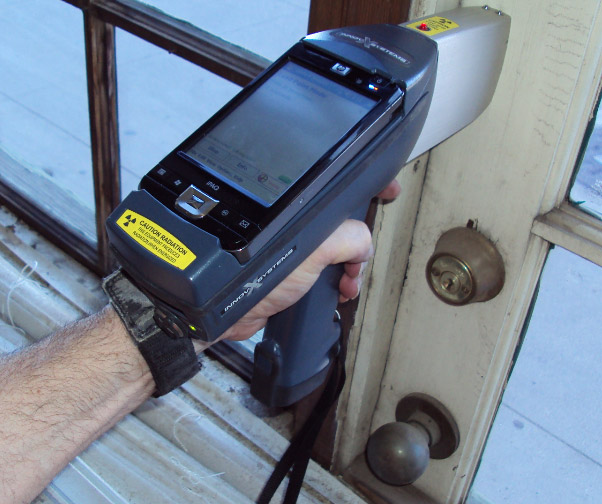Lead Paint Removal Service-- NYC's Trusted Solutions for Lead Security
Wiki Article
Essential Devices and Techniques for Effective Lead Violation Cleanup
Resolving lead offenses successfully necessitates a thorough technique that blends the right devices with strategic techniques. Concurrently, the use of specialized cleaning devices, such as HEPA vacuums and lead-specific cleansing agents, is essential for thorough contaminant elimination. Reliable control methods, including plastic bed linen and adverse air pressure systems, are crucial to prevent the spread of harmful products.Personal Protective Tools
Individual protective devices (PPE) is a vital part in the efficient management of lead contamination clean-up. PPE functions as a crucial barrier, guarding employees from the unsafe effects of lead direct exposure, which can lead to serious wellness repercussions. The important PPE for lead clean-up includes respirators, protective apparel, gloves, and eye defense. Each sort of devices is especially developed to reduce different dangers connected with lead fragments and dirt.Respirators, especially those geared up with HEPA filters, are crucial for filtering system airborne lead particles, preventing breathing. Protective garments, consisting of coveralls and disposable matches, prevents lead dust from sticking to employees' garments, decreasing the risk of additional contamination.
Furthermore, strenuous training on the proper usage and upkeep of PPE is vital. Workers need to be educated on putting on and doffing treatments to prevent contamination. Normal evaluations and substitutes of PPE components are required to keep their protective abilities, making certain a safe and certified cleaning operation.
Specialized Clean-up Devices

Another crucial tool is the wet/dry vacuum cleaner, which can effectively tidy up both dirt and fluid impurities. These vacuum cleaners frequently feature HEPA filters to provide an extra layer of safety and security. Damp wipes or tack cloths are likewise vital for surface cleaning; they are particularly made to capture and hold lead particles, minimizing the threat of spreading contamination.
For more stubborn deposits, specialized lead-removal cleaner are called for. These agents are developed to break down lead particles, making them much easier to get rid of. Scrub brushes with tough bristles can assist in this procedure, particularly on rough surfaces where lead dust tends to adhere much more strongly.
Additionally, encapsulants are used to seal lead-contaminated surfaces, preventing the release of lead dirt. These specialized paints and coatings are made to stick to various substratums, supplying a lasting service for lead control.
Effective Containment Approaches
Reliable containment approaches are crucial in minimizing the spread of lead contamination throughout cleaning tasks. Carrying out durable containment strategies ensures that lead particles do not move to unaffected areas, thus shielding both employees and the atmosphere. One primary approach is making use of plastic sheet to seal contaminated areas. Sturdy polyethylene obstacles can be set up from flooring to ceiling to produce a regulated workspace, considerably decreasing the risk of airborne lead dust dispersal.
To enhance control, encapsulants can be related to surfaces that are not being eliminated or disrupted. These specialized finishings bind lead dust, lowering its accessibility for resuspension. Furthermore, all workers need to use appropriate Individual Protective Equipment (PPE), consisting of respirators and disposable suits, to avoid contamination spread.
Safe Disposal Practices
Making certain risk-free disposal techniques is an important part in the administration of lead contamination cleaning. Proper disposal alleviates the danger of lead coming back the atmosphere and threatening public health and wellness. The very first step is to Lead Violation Removal in NYC identify and set apart lead-contaminated waste from other products. Safe containment utilizing heavy-duty, watertight containers is necessary to protect against spillage during transportation.Transporting lead waste requires adherence to strict standards. Making use of accredited hazardous waste carriers guarantees that the products are dealt with properly. Paperwork, including manifests describing the type and quantity of waste, ought to come with deliveries to track the waste from the site of origin to its last disposal destination.
Designated contaminated materials disposal centers are outfitted to take care of lead-contaminated materials safely. These centers frequently employ advanced methods such as stabilization, solidification, or chemical therapy to neutralize the lead before disposal. Landfilling in specialized, lined locations that prevent leachate from polluting groundwater is a common technique for final disposal.
Normal training for personnel involved in lead garbage disposal is critical to maintain security criteria and prevent unintended exposure. By adhering to these practices, organizations can considerably reduce the environmental and wellness influences connected with lead contamination.
Regulatory Compliance Tips

Following regulatory compliance is critical in the successful execution of lead contamination cleaning. Comprehending and complying with federal, state, and neighborhood policies guarantees not only the security and health and wellness of people but also the lawful and monetary health of the clean-up organization. The Environmental Security Firm (EPA) establishes strict standards, such as the Lead Improvement, Fixing, and Painting (RRP) Policy, which mandates correct qualification and training for specialists dealing with lead-based activities.
Compliance starts with a comprehensive analysis of relevant regulations and guidelines. Organizations has to remain upgraded on any legislative changes, which can be promoted with routine training sessions and subscribing to industry updates. Documentation is another important conformity element; maintaining thorough records of all activities, consisting of inspection records, staff member training logs, and disposal shows up, is necessary.
Furthermore, involving with licensed lead examiners or take the chance of assessors makes certain that lead dangers are appropriately determined and reduced. Employers must enforce making use of Personal Protective Equipment (PPE) and make certain that safety procedures are strictly complied with. Finally, transparent interaction with stakeholders, including workers, customers, and regulative bodies, will cultivate a society of compliance and responsibility, eventually adding to a more secure and more effective lead cleanup procedure.
Verdict
Efficient lead offense cleaning necessitates the combination of specialized devices and calculated methods to ensure safety and efficiency. Using HEPA vacuums, specialized cleaning agents, and reliable containment approaches such as plastic sheeting and unfavorable air pressure systems is imperative. Personal safety devices (PPE) safeguards workers from direct exposure, while secure disposal methods and strict adherence to regulative conformity are essential for properly taking care of contaminated materials. Jointly, these steps substantially minimize wellness dangers and add to a cleaner environment.Report this wiki page